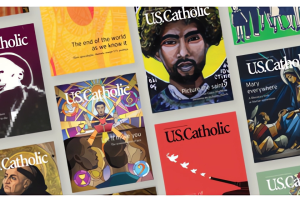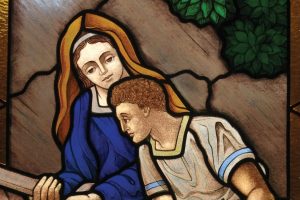It's deja vu all over again: About 150 years ago the Vatican's first response to the "modern world" of democratic reform and theological renewal was to silence and shame any Catholic who spoke positively about either. So we got the Syllabus of Errors in its various incarnations and the condemnation of "modernism" and anyone who espoused modern approaches to scriptural interpretation or the "new theology" of the early and mid 20th century. Big names there: Congar, DeLubac, Jungmann, Murray–all ordered to silence on this topic or that.
Until, of course, the Second Vatican Council undid all that nonsense and brought the church–at least theologically–into the late 19th century (still 100 years behind the rest of the world). All those silenced became heroes, the bright lights of the renewal.
Now here we are at the beginning of the 21st, and once again the Vatican (and presumably the pope) is choosing the former path: condemnation and silencing, first of American women religious, and now of the Redemptorist leader of the Irish Association of Catholic Priests, Father Tony Flannery. His crime? Raising questions and organizing pastors around issues of concern, including the church's sexual teaching and the new English translations of the Mass, and lining up with victims of abuse in the ravaged Irish church.
To be honest, this smells a bit of desperation on the part of the Vatican. The Association of Catholic Priests counts 20 percent of Irish clergy on its roster; an American counterpart is now in the works. Irish Catholics are voting with their feet, with Sunday Mass attendance having plummetted to levels seen in the rest of Europe. On this side of the Atlantic, four Catholics leave the church for every one who joins, even as the U.S. bishops double down on deeply partisan political involvement in this year's presidential election.
Speaking with several friends and colleagues off the record, many have asked if this isn't a "moment of truth" in the church, given the widening chasm between the bishops and the Vatican on the one side and the many of the clergy and baptized people on the other. Others have wondered if these displays of "power" from the Vatican and bishops are intended to accomplish exactly what they are doing: drive from the church anyone who deviates from current magisterial teaching, even those who know full well that teaching on many of these matters can change.
Either way, it is a strange time to be a Catholic. One wonders where on earth or in the church the Holy Spirit is stirring the air. It took 100 years for the Vatican to get up to speed at Vatican II–and the Roman Curia at least has been resisting ever since. Unfortunately, I'm not sure we have another 100 years to waste.











